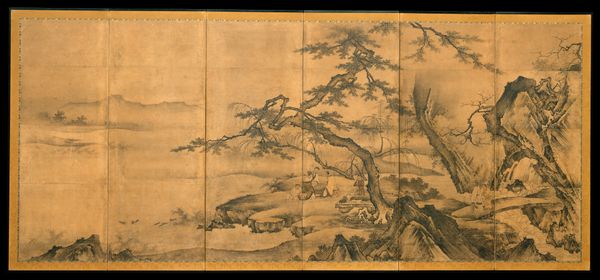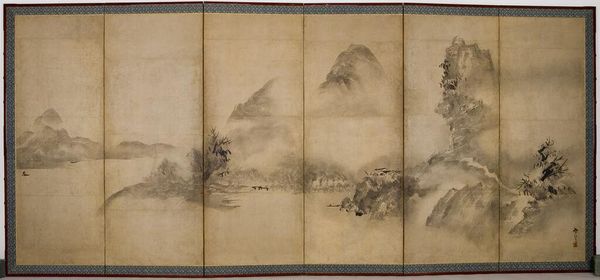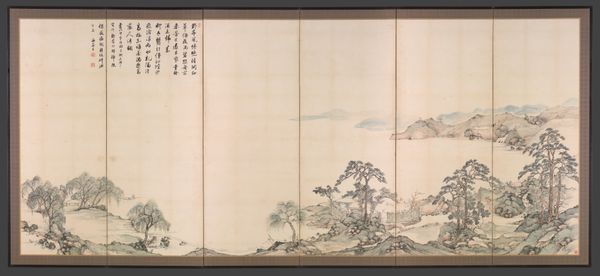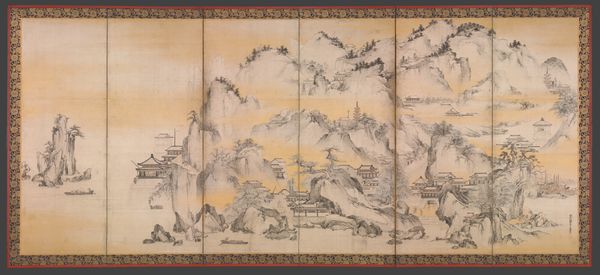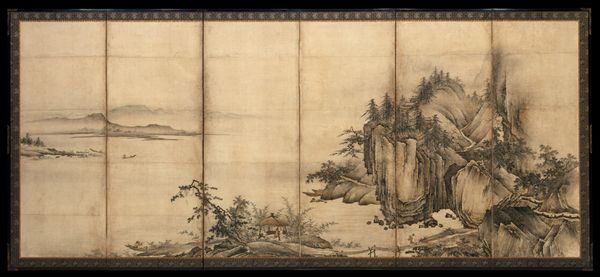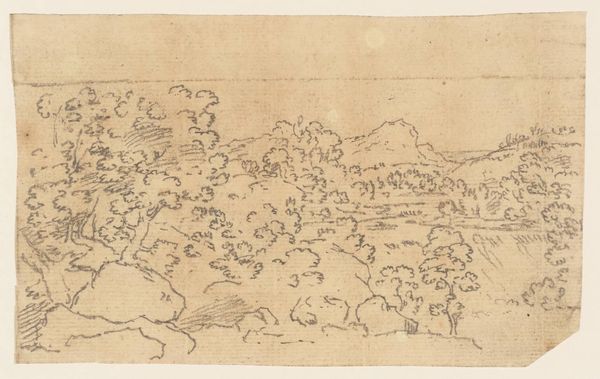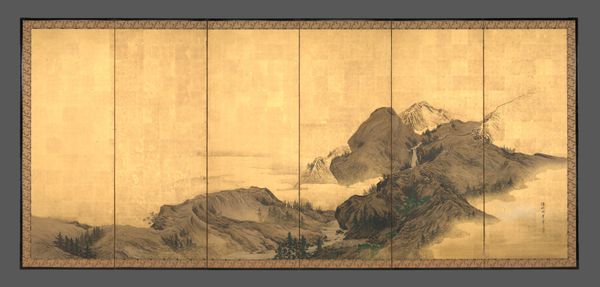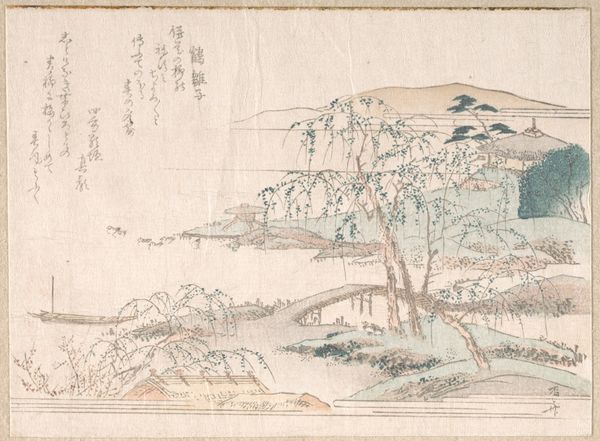
Landscape of the Four Seasons (Eight Views of the Xiao and Xiang Rivers) 1500 - 1533
0:00
0:00
painting, paper, ink
#
ink painting
#
painting
#
asian-art
#
landscape
#
paper
#
ink
#
mountain
#
23_muromachi-period-1392-1573
Dimensions: each: 68 1/4 in. × 12 ft. 2 in. (173.4 × 370.8 cm)
Copyright: Public Domain
This is Sōami’s "Landscape of the Four Seasons", or "Eight Views of the Xiao and Xiang Rivers", painted on a set of eight-fold screens sometime between the late 15th and early 16th centuries. Sōami was an artist in the service of the shogunate, the military dictatorship that ruled Japan at the time. The monochrome ink landscape draws inspiration from the idealized visions of the Chinese literati tradition. This style was embraced by Japanese artists as a means of aligning themselves with cultural sophistication, and an elite, masculine identity. These landscapes, however, aren't straightforward copies. Sōami subtly infuses Japanese aesthetic sensibilities into the Chinese form. In contrast to the dense and detailed Chinese paintings, Sōami employs a more spacious composition and a softer brushwork, creating a sense of tranquility and quietude. It is a conscious negotiation between cultural homage and national identity. The screens invite you to meditate on the passing of time and the beauty of nature, while also considering the complex cultural exchanges that shaped Japanese art.
Comments
No comments
Be the first to comment and join the conversation on the ultimate creative platform.
